When the conclave elected Argentine churchman Jorge Bergoglio as pope on March 13, 2013, the world puzzled over this election. He has now been Pope Francis for ten years. What did he achieve?
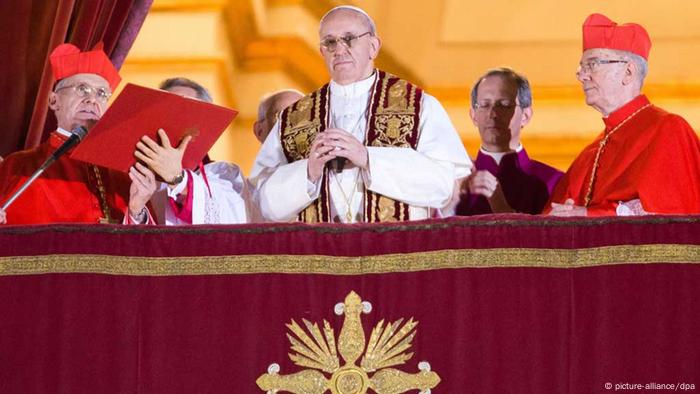
“You know, it was the job of the conclave to give Rome a bishop. It seems my fellow brethren the cardinals went almost to the ends of the earth to get him…”
Few knew the churchman who stood there on the loggia of St. Peter's Basilica and addressed the world. The Argentinian Jorge Mario Bergoglio, Archbishop of Buenos Aires, was never particularly noticed in the media.
Many viewers asked themselves “Jorge who?…” when the name was mentioned. However, church experts knew promptly that the then 76-year-old was already in the race to succeed the late Pope John Paul II in 2005, but lost out to the German Joseph Ratzinger, who later became Pope Benedict XVI.
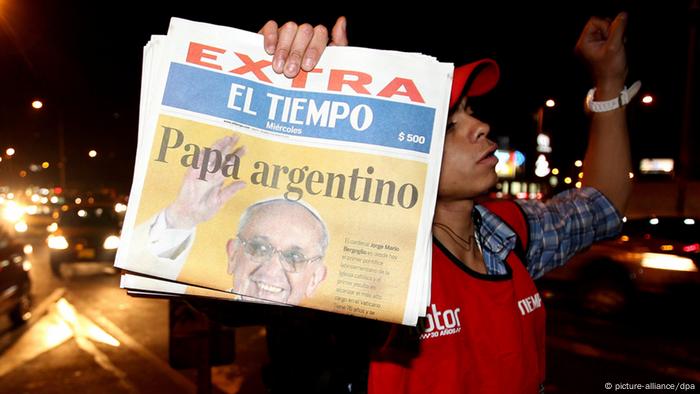
Argentina celebrated Francis after the election as “Argentine Pope”
Ten years later, many people around the world still want to know who this Pope is, what he stands for. He often seems familiar to people, in some ways he remains alien. At least one thing is clear: Pope Francis is different from his predecessors.
The program of the name
Bergoglio chose – and that was a sensation within the sensation – as the first pope ever to choose the name Francis. Popes have always raved about the founder of the order, Francis (1181/82-1226) and his orientation towards radical poverty. But they never settled on this seemingly programmatic name.
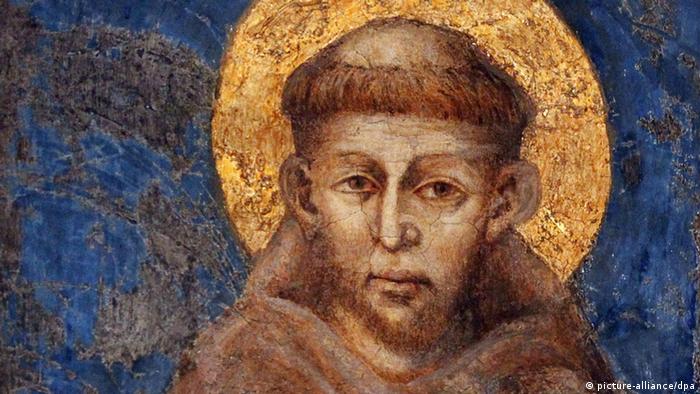
The 13th-century fresco shows Francis of Assisi
“Pope Francis is a Franciscan Jesuit,” Dutch Vatican correspondent Hendro Munsterman told Deutsche Welle. “He has the prophetic of Francis of Assisi. He values poverty, simplicity, the environment, interreligious dialogue. He wants to fix the church like the 13th-century saint because it's broken.”
Munsterman, himself a theologian, has been observing and analyzing Francis since the beginning of the pontificate. Since March 2013, there have been many small signs of poverty and simplicity: Francis, who walked in worn-out shoes, did not take up quarters in the Apostolic Palace, but in the Vatican guest house. Again and again he focuses his attention on people from the fringes of society, refugees, migrants. When he travels he can be seen in the small Italian car.
Turning to the edges
These small signs are matched by big words. With his environmental encyclical “Laudato si” in 2015, in which he called for a better way of dealing with creation and with people, Pope Francis made headlines around the world. Incidentally, it was also his attempt to influence the world climate conference that took place in Paris in autumn 2015. Quite a few of his 40 trips abroad took him to the fringes of the world community or the respective national societies. The longer he is in office, the sharper he accuses the industrialized countries and especially the Europeans. And during the corona pandemic, he always called for help with vaccines for poorer countries.
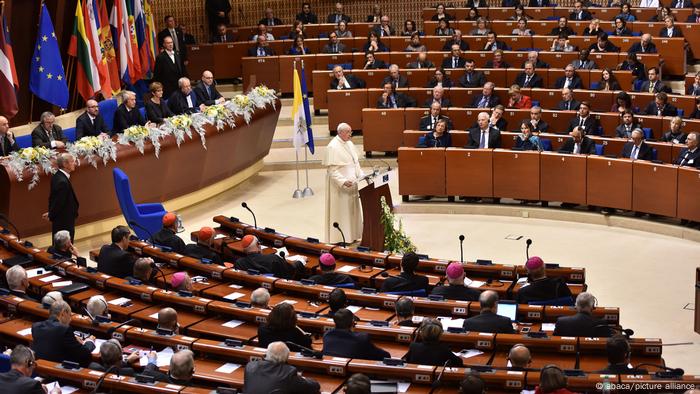
November 2014: The Pope as a warning in the European Parliament in Strasbourg
This fits with a perhaps not geopolitical, but certainly geo-ecclesiastical change. Francis is not a European – and that in a Catholic Church that is traditionally European in character and thinks in a Europe-centric way. “It is clear that Pope Francis is the first truly global pope, a non-Western pope, who liberated Catholicism from the idea of a moralistic, middle-class, middle-class Catholicism that still defined what Catholicism is,” church historian Massimo Faggioli told DW.
Farewell to Europe
The thought comes to mind when you look at statistics. According to the latest figures published in early March, there are 1.378 billion Catholics worldwide. From year to year the number of believers in Africa and Asia and their share in the world total of Catholics is increasing. In Europe, this number is stagnating. The numbers of clergy and religious are developing similarly. In part, the various Catholic characteristics are drifting apart; the worldwide Catholic Church, it seems, is a multiplicity of Catholic Churches.
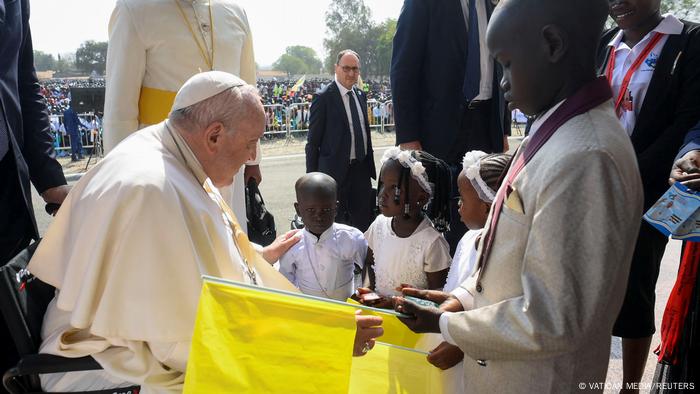
Guested in a wheelchair Africa: Francis in February 2023 in South Sudan
Francis became Pope when abuse scandals had already shaken the Catholic Church in very different regions of the world. At least that's what they thought. Today the issue of sexual violence by men of the Church is truly a global issue. And Francis is addressing this dramatic situation more clearly than his predecessors. For some in the Vatican it goes too far. Above all, he approaches it in a different way. Basically. Francis orders the church to think about itself. And to do this he relies on much more dialogue, much more discussion and tolerance of different opinions than believers were used to from the years of authoritarian leadership from the Vatican.
Synod – Church in dialogue
In church language, the term for this dialogical awareness is “synodality”. That means roughly: the church is on the move together and in exchange with one another. With its predecessors, synods of bishops in the Vatican were prepackaged affirmation events. Francis wants open and controversial debates. That doesn't mean, however, that he always follows the impulses with concrete changes.
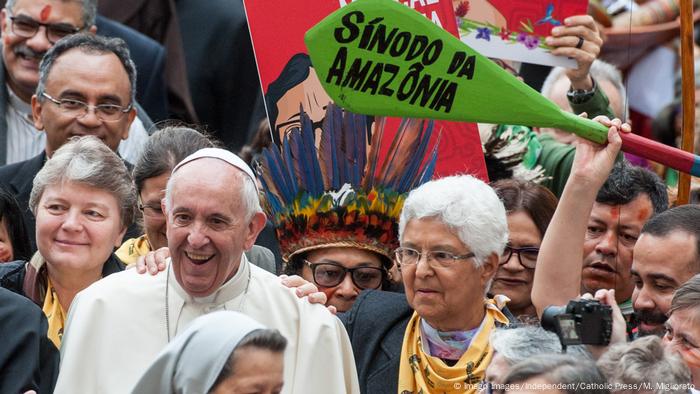
Francis in 2019 on the fringes of the Amazon Synod in the Vatican
Church historian Faggioli makes this clear with specific examples, with open questions: “What will happen to the role of women in the Church, to women in the diaconate, but also with women in office in general?”
The question also arises for further theological and structural reforms, especially in relation to church leadership.
The opposing expectations
“The prophetic and the cautiously doubtful,” says theologian Munsterman, “go together in Pope Francis.” He makes everyone uneasy, “those who want changes (and hope for quick decisions) and those who, on the contrary, leave everything as it is or maybe even want to return to the good old days of the ideal world of Benedict XVI's Bavaria.” .
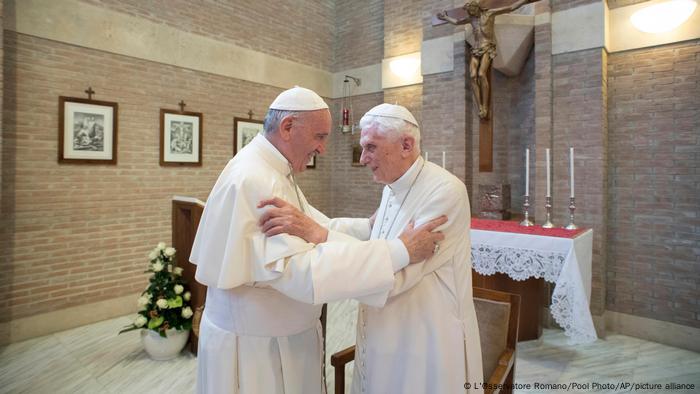
Francis and his predecessor Benedict XVI. in the summer of 2017
Francis has long been one of the oldest popes in church history. Older than Benedict (2005-2013) at his resignation, older than John Paul II (1978-2005) at death. In the meantime, Francis often moves around in a wheelchair, and his program becomes clearer when he travels. And yet, according to the experts, the question of what will characterize his pontificate remains on his tenth anniversary. The Catholic Church and the papal office are already different today than they were in 2013.
Francis, says Munsterman, is a pope “who thinks in terms of processes”. His prophetic speech sets processes in motion and wants to challenge. However, the pope from the Jesuit order wants to lead these processes spiritually.
For Faggioli, the biggest problem remains “the open, still uncertain outcome” of the synodal process towards synodality. “That's the biggest bet,” says the scientist. It's about the long-term importance of Pope Francis. “And the next two years will be crucial.”